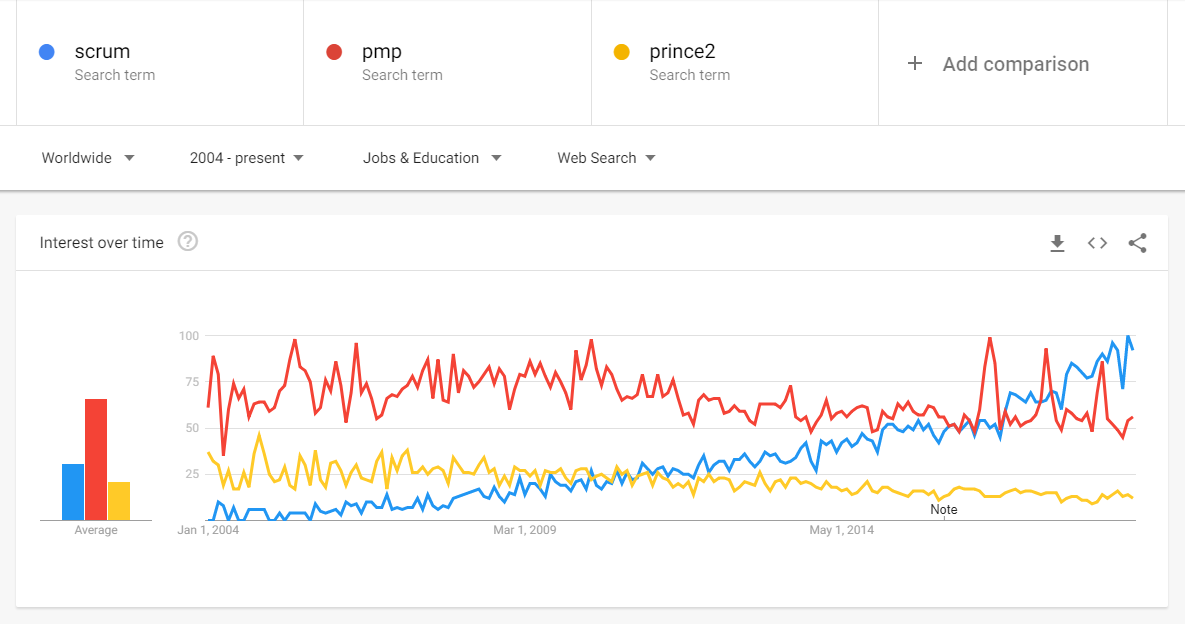Traditional project management emphasizes on conducting detailed upfront planning for the project with higher priority for fixing the scope, cost and schedule - and managing those parameters. Whereas, Scrum encourages data-based, iterative decision making in which the primary focus is on delivering products that satisfy customer requirements.
To deliver the greatest amount of value in the shortest amount of time, Scrum promotes prioritization and Time-boxing over fixing the scope, cost and schedule of a project. An important feature of Scrum is self-organization, which allows the individuals who are actually doing the work to estimate and take ownership of tasks.
Google Trends Analysis

How to generate this graph?
Step 1: Visit www.google.com/trends.
Step 2: Compare Scrum, PMP and PRINCE2.
Step 3: Select the country and category (i.e., "United States" and "Jobs and Education") in the top menu bar.
Scrum is being used in most Fortune 500 companies such as Apple, IBM, HP, Bank of America, AT&T, Dell, Verizon, Lockheed Martin, and PepsiCo. SCRUMstudy™ has students from 7500+ companies in 150+ countries.More
LinkedIn Search Results



A search on LinkedIn also shows that Scrum is more popular than PMP and PRINCE2.
Click here for more live discussions among project professionals on LinkedIn about Scrum vs. Traditional Project Management.
Following table summarizes many of the differences between Scrum and traditional project management:
| Parameters | Scrum | Traditional Project Management |
|---|---|---|
| Emphasis is on | People | Processes |
| Documentation | Minimal - only as required | Comprehensive |
| Process style | Iterative | Linear |
| Upfront planning | Low | High |
| Prioritization of Requirements | Based on business value and regularly updated | Fixed in the Project Plan |
| Quality assurance | Customer centric | Process centric |
| Organization | Self-organized | Managed |
| Management style | Decentralized | Centralized |
| Change | Updates to Productized Product Backlog | Formal Change Management System |
| Leadership | Collaborative, Servant Leadership | Command and control |
| Performance measurement | Business value | Plan conformity |
| Return on Investment | Early/throughout project life | End of project life |
| Customer involvement | High throughout the project | Varies depending on the project lifecycle |
